This week on You Asked: What is Moiré effect, and can you do anything about it? When is it safe to buy an open-box TV? Are there any curved TVs you can buy? Can you use the ARC port on a TV to get sound to a non-ARC receiver? And can you really hear a difference when streaming Dolby Atmos versus Dolby Atmos on disc?
Raiders of the last eARC
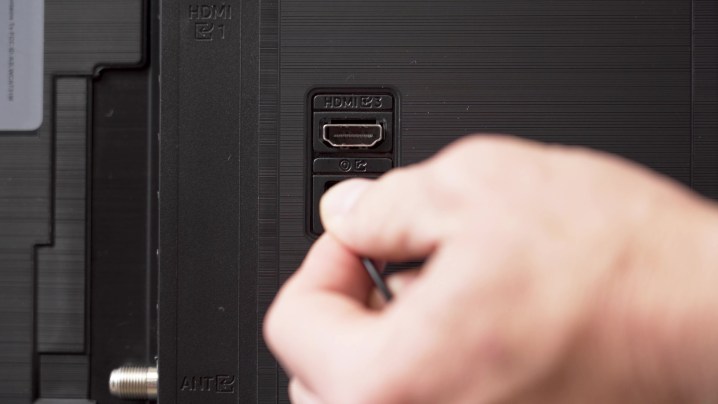
Jon Larson upgraded his TV to a 77-inch LG C3 OLED, which has an ARC/eARC port. But his Denon receiver is old enough that it doesn’t support ARC. Can Jon still send audio from his TV to his receiver via HDMI since the Denon doesn’t support Audio Return Channel, or ARC?
The answer is no. Both devices on either side of an HDMI cable must support ARC in order to get audio down the pipeline from the TV to the receiver. The TV and receiver need to be able to perform a handshake, and the receiver needs to look for an incoming audio signal on certain “lanes of traffic,” if you will.
Jon was hoping there was a streaming device with a separate audio output. Unfortunately, other than some Blu-ray players that have dual HDMI outputs (but are terrible for streaming), I can’t think of a streaming device with a separate audio output other than an old Roku box that is now over five years old and absolutely not a good option.
So, Jon, as you suspected, running an optical cable from your LG OLED TV to the receiver is your easiest and least expensive option.
Is flush-mount the best idea?
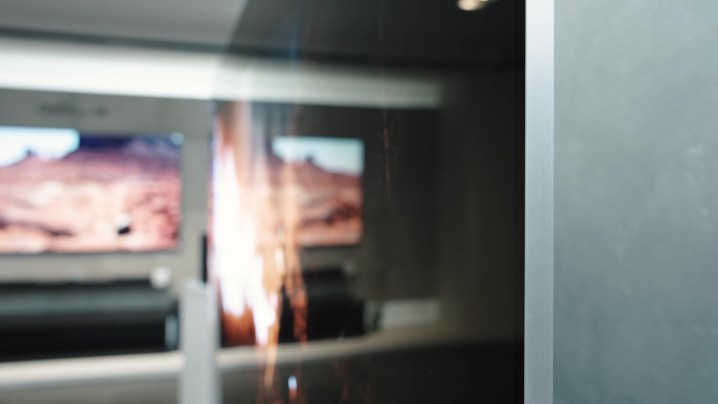
Volker Uffelman is worried about mounting his new 77-inch LG G4 OLED TV to the wall using the provided no-gap wall-mount due to concerns about inadequate ventilation. His concern is that over the long term, heat could be an issue.
LG is smart enough not to promote a wall-mount solution that would jeopardize the longevity of the OLED TV. This is not a conspiracy case of planned life-shortening for the TV. The G4 has a generous amount of internal thermal management. Also, the G4 comes with a five-year warranty, so LG is pretty confident in the TV’s longevity.
All Dolby is not alike
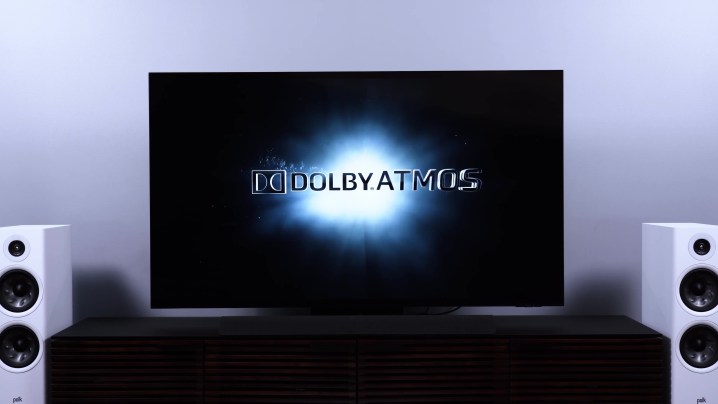
Constantinos wonders if there’s a difference between the Dolby Digital+ that you get from streaming versus the Dolby True HD audio that you can get from Blu-ray discs and other high-end sources.
Yes, Constantinos, the lossless Dolby True HD signal sounds noticeably better than the Dolby Digital+ signal that comes from streaming services. There are other factors at play, but the lossless audio signal sounds noticeably better to me, and the Atmos experience is superior. That doesn’t mean that streaming surround and streaming Atmos is bad, but there’s no question that my 4K Blu-ray discs sound significantly better than the streaming version of the same title.
The Moiré effect in 2024
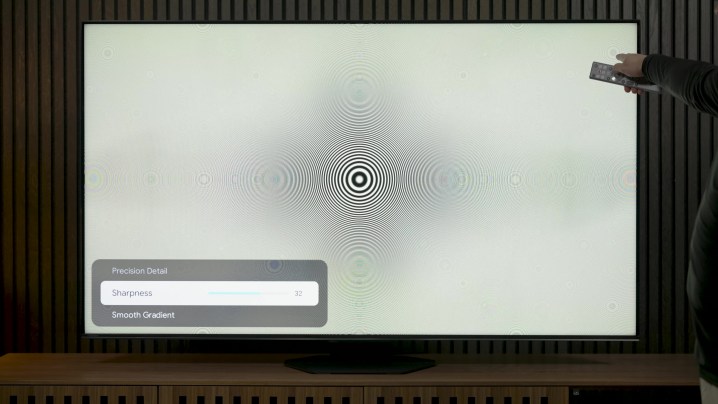
Michael Orellana has been struggling with Moiré effect for years and is disappointed to find out his new Samsung S89C OLED still produces this effect, albeit probably to a lesser extent than his prior TV. He’s wondering if even newer TVs still do this, what causes it, and if there’s any way to get rid of it.
Before we get into Moiré effect on TVs, here’s a reminder of what it is. Now, just sitting still, the above pattern may appear to have movement or swirls, but if we move it around slightly, it is almost certain to cause the image appear to have movement or weird swirls within it, even though the pattern itself isn’t changing.
In person, if I held up a Moiré pattern and the image was perfect still, and you were perfectly still, you might not see the Moiré effect. But as soon as I stared moving the image or you moved around, you would probably see it.
Moiré effect on TVs involves a pattern on the television — not necessarily a dedicated Moiré pattern designed to trigger this kind of effect, but any pattern with tight, fine lines in very close proximity.
What causes you to see this effect on a TV is a combination of things. One can be less than absolutely awesome processing on the TV. And I characterize it that way because, frankly, TV processing is hard enough. But these kinds of patterns? They are super hard for a TV’s processor to handle. Only the very best video processors can handle displaying these tight patterns without a noticeable Moiré effect. I will say, though, that TVs with poor processing will cause Moiré effect on images that TVs with decent processing have no problem handling. So there are levels to this. But the super-fine, super-tight patterns? Those are hard for even the very best TVs.
The other part of this equation (it’s actually tied to the processing) is a problem with sharpening an image too much, especially compressed or low-resolution content. The more a TV tries to create sharpness (and this is especially true in the absence of pixel information), the more likely you are to get Moiré effect.
You can sometimes reduce Moiré effect by reducing the sharpness setting on your TV. Some TVs have sharpness settings that are set too high by default. (And, frankly, the sharpness setting should have been ditched when we got away from CRT TVs, but that’s a another thing for another time.)
Anyway, on many TVs, you can reduce the sharpness setting, and that will have eliminate some Moiré effect. Unfortunately, sometimes TV brands will limit how much influence you can have over the processing that’s done by the TV. We’re seeing this now with certain Samsung TV models. Turning down the sharpness all the way doesn’t have much effect on the processing that’s being performed.
So, it’s possible that even if you turn the sharpness on your S89C all the way down, you may still see the Moiré effect. Some of that is that the TV just can’t not create that effect because of the difficulty of the pattern. Some of it is that you can’t effectively reduce an overly sharpening.
I will say that in all my years of TV reviewing, Sony’s TVs have historically had processing that best handles Moiré effect. But based on some stuff I’ve already seen this year, it’s possible the LG G4 might actually be the best at handling Moiré. We will know more as I get through the 2024 TV reviews.
When to buy open-box products?

Tom Reidy writes: Would you consider buying an open-box 85-inch QN90C if you could save $700? A local chain store has an open-box TV marked down to $1,700, versus the regular price of $2,400. What risk should I consider before buying this TV?
I worked in retail for many years and was once a big fan of the open-box buy. I persuaded my parents get an open-box 36-inch Toshiba CRT TV. And that thing — which was built like a tank — still looked good when I helped them get rid of it some 10 years later.
Today, I think certified refurbished goods can be a smart buy. The great thing about certified refurbs is that they often come with the original warranty, and they’ve been gone over by a professional since rolling off the factory line. So I think they actually stand a better chance of being problem-free for their expected lifetime.
But today’s open-box TVs give me a little pause. Actually, I should clarify that I see a difference between open-box TVs and floor models or demo TVs. “Open box” simply means the box has been opened. Maybe the TV was used for a short time before a customer decided it wasn’t for them. Maybe it wasn’t used at all because it didn’t fit on the media stand like they thought it would. Maybe it was used for three weeks before the person who bought it decided they spent too much. Or maybe they wanted to upgrade.
If the open-box model has a story like any of those, and it comes with a warranty, I say get it. Thing is, sometimes you don’t get to hear about the TV’s story. Or, maybe you don’t get told the true story. Is it an open-box TV because it’s got an imperfect panel? Or maybe one or two dead pixels? Or perhaps it’s got some DSE, or “dirty screen effect.”
My bigger concern, though, is when demo or floor models are used for a period of time, then reboxed by the retailer and sold as open-box instead of floor models. I can see retailers doing this because they don’t want to waste a TV for demo purposes. But when the TV is on all day every day at absolute maximum brightness, that does take a toll — less so on an LCD-based LED TV than an OLED, but it still takes a toll.
I guess it all comes down to how much you trust the retailer or the salesperson you’re working with. Find out what you can about the TV. If you trust what you’re being told, and the retailer is willing to back up the sale to make sure you’re happy? Well, first off, get that assurance in writing. But then I say go for it. It can be a great way to save money.
What happened to the curve?
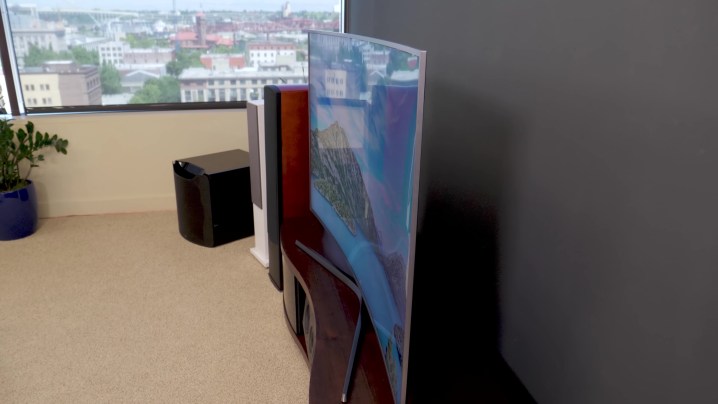
Norbert Dupont writes: “Are any manufacturers making large curved OLED TV screens? After experiencing my curved OLED computer monitor, I’m in love!”
Norbert, I’m, afraid the answer is no. Well, sort of. Curved OLEDs and LED TVs were a thing for a while. But sales of those models was pretty abysmal, so they gave up. They really tried to sell them, too, claiming that the right radius on a curved TV could help make the far left and right of the screen as equidistant to your eyes as the center.
But these TVs didn’t really make good on the promise of “immersion” that was sold along with the curve. Most folks would sit too far away from the screen to get the benefit. I suspect that what you love about your curved monitor is the wraparound effect. But you get that wraparound effect because you sit close to the screen. Most folks don’t want to sit that close to a larger, TV-sized screen.
There are, however, a couple of exceptions that come to mind. There’s the LG OLED Flex. It’s a 43-inch OLED TV that doubles as a legit monitor, complete with LED bias light,s and it can be flat or any number of degrees of curved at the push of a button. I loved that thing for the time that I had it, and it was tough to send it back. I suppose if you don’t need a really big TV, the Flex would do just fine for you.
If you need something bigger, there’s also the Samsung Odyssey Ark. That’s not a TV, but a 55-inch monitor with built-in speakers. And a streaming stick gets it close to being a TV, I suppose.
Editors' Recommendations
- You Asked: The 8K chicken meets the 8K egg
- You Asked: Sony surround, FlexConnect vs. Sony HT-A9, LG G4 vs. Samsung S95D
- You Asked: HDMI 2.1 and Blu-ray, TV life spans, and 2023 TV price drops
- You Asked: HTIB vs. soundbars, Sony’s 2024 lineup, and plasma upgrades
- You Asked: tone mapping, bad Blu-ray players, mini-LED vs. microLED, and TCL X955




